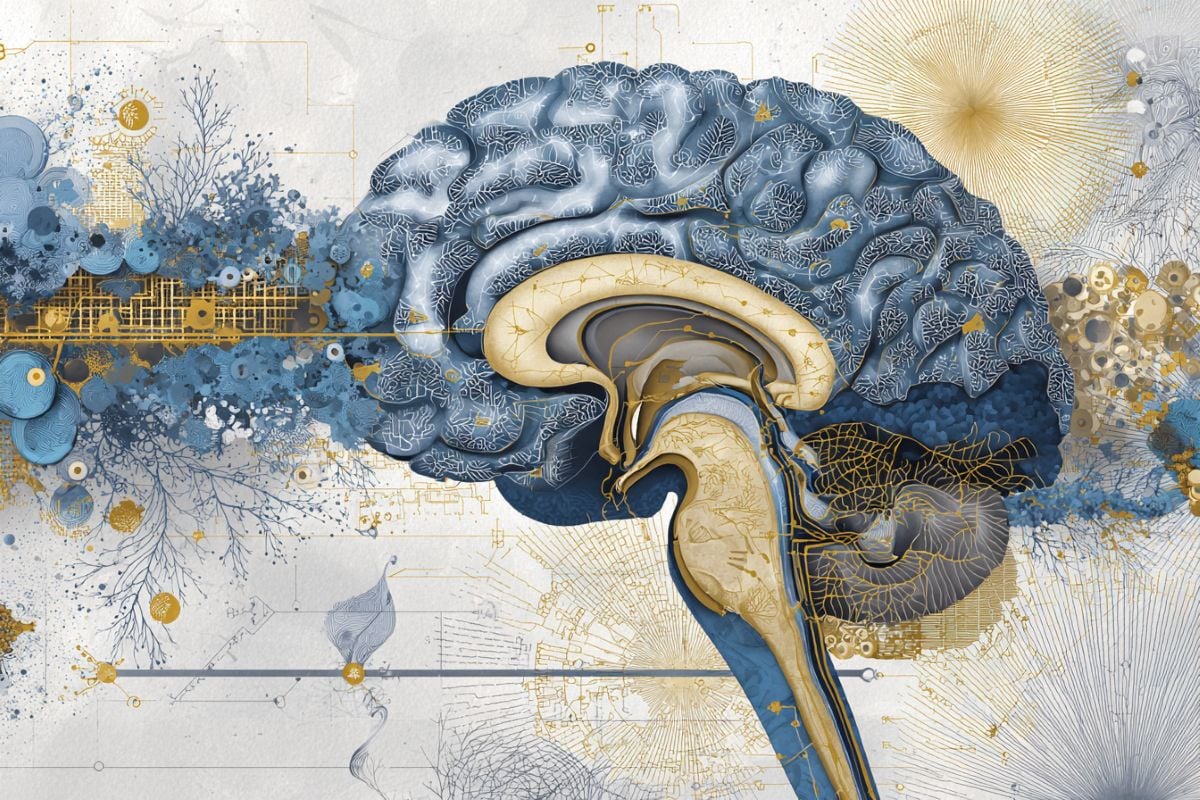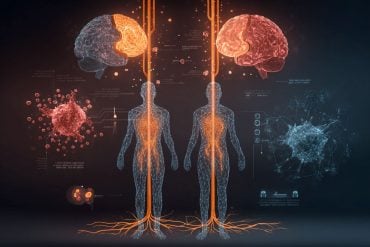Summary: New research reveals that reduced ATP signaling in the hippocampus plays a causal role in both depression- and anxiety-like behaviors. In stressed male mice, ATP levels and the ATP-releasing protein connexin 43 were markedly lower.
When researchers experimentally reduced connexin 43, mice developed the same behavioral symptoms even without stress exposure, confirming a direct mechanistic pathway. Restoring connexin 43 revived ATP levels and improved behavior, pointing to a shared molecular origin for depression and anxiety and a potential therapeutic target.
Key Facts:
- Shared Mechanism: Lower ATP release in the hippocampus drives both depressive- and anxiety-like behaviors.
- Connexin 43 Role: Reducing or deleting connexin 43 is enough to induce these symptoms on its own.
- Restoration Works: Reintroducing connexin 43 normalizes ATP signaling and improves behavior in distressed mice.
Source: SfN
In a new Journal of Neuroscience paper, Tian-Ming Gao and colleagues, from Southern Medical University, explored how adenosine triphosphate (ATP) signaling relates to depression and anxiety using male mice.
ATP is a molecule that not only provides energy but also supports communication between neurons. The researchers focused on ATP signaling in a brain region implicated in depression called the hippocampus.
Male mice that were more likely to acquire depressive- and anxiety-like symptoms following long-term stress had less ATP levels and reduced expression of a protein involved in ATP release (connexin 43).
When the research team genetically dampened or deleted connexin 43 in cells that release ATP in another group of mice, this alone led to depressive- and anxiety-like behaviors and lowered ATP levels.
Bridging the findings together, in distressed mice, restoring connexin 43 in the hippocampus brought ATP levels up to normal and improved behavioral outcomes.
Says Gao, “This is the first direct evidence that deficient ATP release in [a region of the] hippocampus drives both depressive- and anxiety-like behaviors, revealing a shared molecular pathway [for these conditions].”
Gao also emphasizes that the findings linking connexin 43 to this mechanism point to a potential treatment target for treating depression and anxiety when they occur at the same time.
Of note, the researchers plan to assess both sexes in future studies.
Key Questions Answered:
A: Reduced ATP release in the hippocampus directly drives depressive- and anxiety-like behaviors.
A: Loss of connexin 43 decreases ATP release, triggering behavioral symptoms.
A: Yes — reintroducing connexin 43 normalized ATP levels and improved behavior in stressed mice.
Editorial Notes:
- This article was edited by a Neuroscience News editor.
- Journal paper reviewed in full.
- Additional context added by our staff.
About this depression and neuroscience research news
Author: SfN Media
Source: SfN
Contact: SfN Media – SfN
Image: The image is credited to Neuroscience News
Original Research: Closed access.
“ATP Release Deficiency Through Astrocytic Connexin 43 in the Dorsal Hippocampus Promotes Depressive- and Anxiety-like Behaviors” by Tian-Ming Gao et al. Journal of Neuroscience
Abstract
ATP Release Deficiency Through Astrocytic Connexin 43 in the Dorsal Hippocampus Promotes Depressive- and Anxiety-like Behaviors
Depression is a common psychiatric disorder, and increasing evidence implicates the dysregulation of extracellular ATP and hippocampal dysfunction in its pathophysiology.
However, whether ATP release is involved in depression and mechanisms underlying this involvement remain unclear. Moreover, the basis for the comorbidity of depression and anxiety disorders remains unclear.
In our study, we observed reduced connexin 43 (Cx43) and extracellular ATP levels in the dorsal hippocampus but not ventral hippocampus of susceptible adult male mice exposed to chronic social defeat stress.
Conditional knockout of astrocytic Cx43 or its specific knockdown in dorsal hippocampal astrocytes led to depressive- and anxiety-like behaviors, whereas neuronal knockout of Cx43 had no effect on these behaviors.
These deficits were accompanied by decreased extracellular ATP levels, while supplementation with exogenous ATPγS reversed these behavioral deficits. We further identified Cx43 as a critical regulator of ATP release and a modulator of astrocytic network connectivity and morphology.
Notably, overexpression of Cx43 combined with the inhibition of ATP-degrading enzymes in the dorsal hippocampus restored ATP levels and ameliorated behavioral deficits. Taken together, our results demonstrate that deficiency of ATP release from dorsal hippocampal astrocytes leads to depressive- and anxiety-like behaviors, primarily through Cx43.
These findings shed new light on the mechanisms by which ATP regulates depression and anxiety pathogenesis and the role of dorsal hippocampus in depression and anxiety, providing potential therapeutic targets for treating these comorbid disorders.







